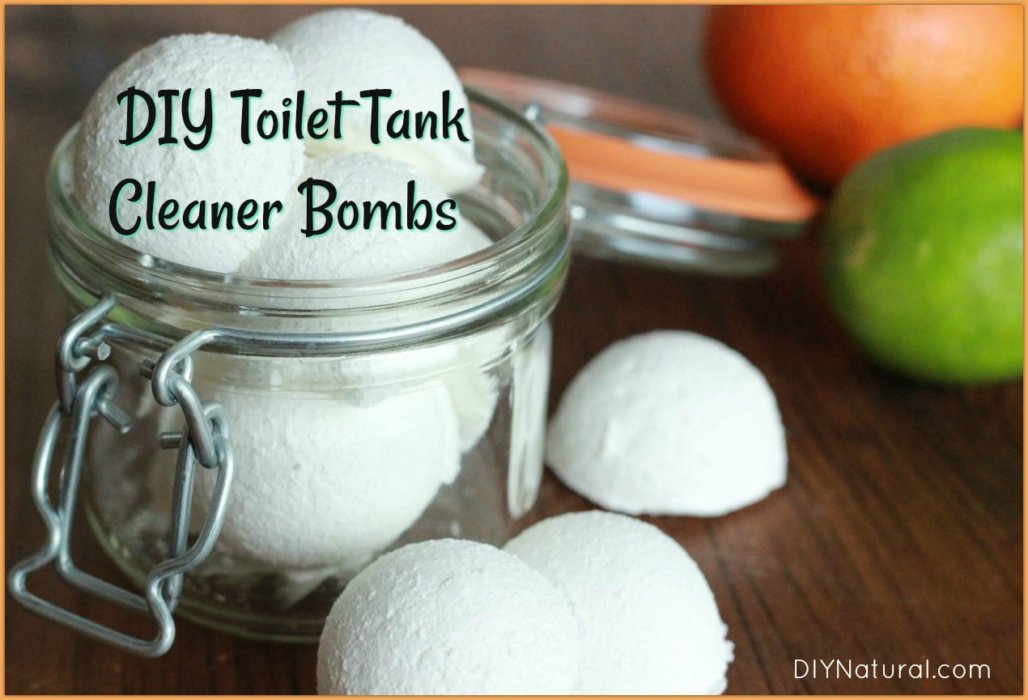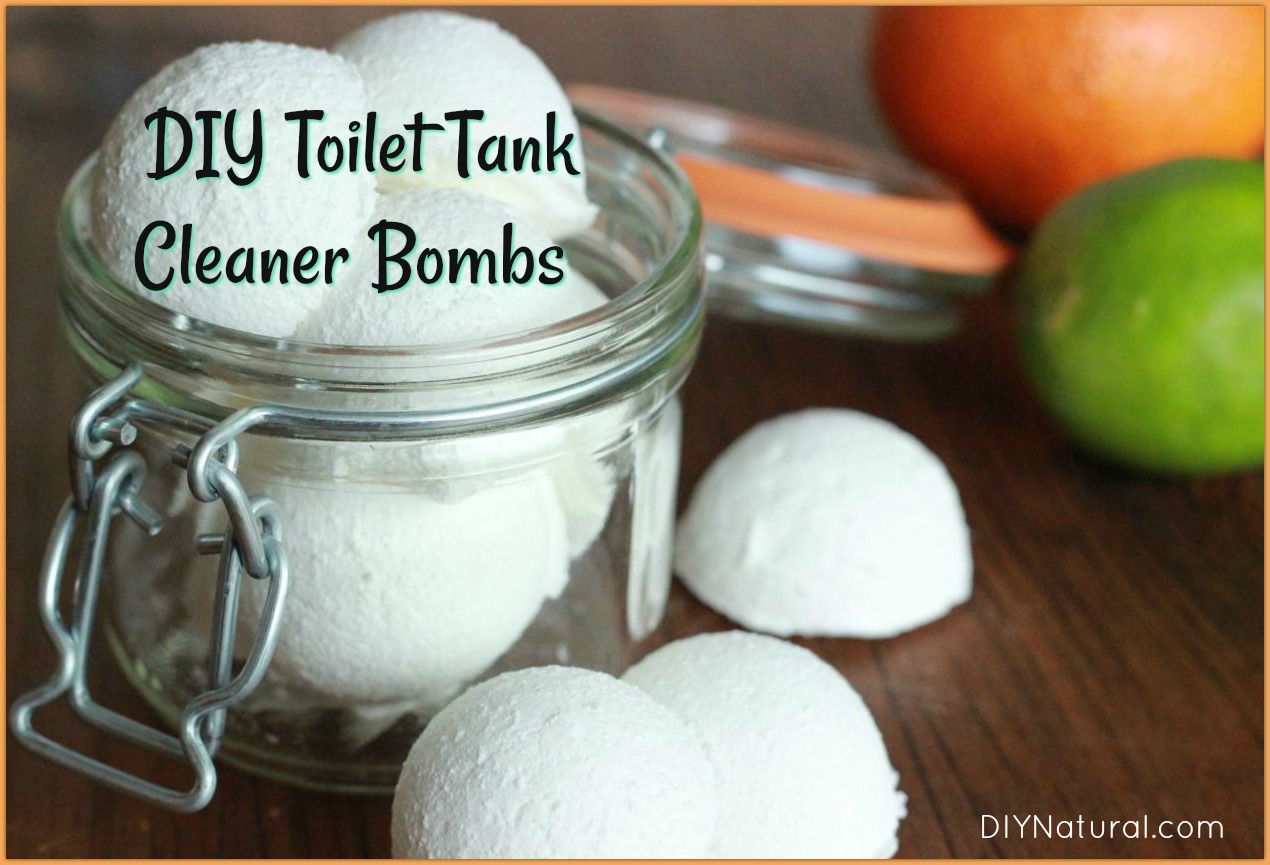
Use this simple DIY toilet tank cleaner twice each year. It extends the life of your toilet, and you control what goes into your septic tank!
You may not look into your toilet tank very often. I know I never did until someone asked me to come up with a cleaner for it. Mine was rusty and dirty-looking. I did not want to harm the pipes or septic tank with harsh cleaners, so this natural solution works great.
Why You Should Clean Your Toilet Tank
I wrote about DIY toilet bombs before. And you should definitely make and use them to clean your toilet bowl. But don’t stop at the bowl, the tank needs periodic cleaning too!
Did you know that many plumbers actually recommend cleaning your toilet tank at least twice per year? Debris and other buildups in a toilet tank can lead to erosion of the toilet components, and affect the use and lifespan of your toilet. Furthermore, if you have a rarely used toilet somewhere in your house, the standing water in the tank can harbor mold and bacteria. A dirty toilet tank may also cause odors to permeate the bathroom.
Cleaning the tank a few times per year with these natural DIY toilet tank cleaner tablets will prevent these issues and keep your bathroom fresh.
Natural DIY Toilet Tank Cleaner Tablets
The easiest way to make a DIY toilet tank cleaner is to start with a bath bomb recipe. One part citric acid to two parts baking soda. Add some liquid soap and essential oil and you’re on your way.
Ingredients
- ¼ cup citric acid (buy it in bulk here)
- ½ cup baking soda
- ½ tablespoon liquid soap (Use dish soap or make your own liquid soap)
- 10-15 drops of essential oil such as lavender or tea tree (find pure organic essential oils here)
Directions
- To make the DIY toilet tank cleaner tablets, mix the citric acid and baking soda in a glass or stainless steel dish. Add the essential oil and mix well.
- Add the liquid soap slowly while mixing. Note: Stop adding soap if the mixture gets too wet and begins growing. The mixture should be just wet enough to hold together in a clump when squeezed in your hand. Add a tiny bit more soap if needed until the mixture holds its shape when squeezed.) Stir until mixed thoroughly.
- Fill small silicone molds (about a tablespoon or so) with the mixture and pack well. Allow drying for 12-24 hours. Pop out of the molds and dry over a few days. When thoroughly dry, store in a quart jar with a tight-fitting lid. It is important to keep them very dry.
Using Your DIY Cleaning Tablets
- You’ll simply drop one of the tablets into the back of the toilet tank and wait. The fizzing action of the tablet, like their bath bomb cousins, will go on for a few minutes.
- After the fizzing is done, leave the tank alone for about 15 minutes. If stains and debris remain, you can scrub the tank with your toilet brush until clean. (Depending on the state of your tank, you may need more than one tablet.)
- Flush the toilet and you’re done!
It was once thought that citric acid was too harsh for household pipes, but now it’s known that baking soda neutralizes the acid to a harmless level. It will not harm pipes or your septic tank. The essential oils will kill any germs and your tank will be clean and disinfected.
Bonus Content
- Homemade Toilet Bowl Cleaner Recipes For Bowl and Tank
- DIY Deodorizing Tablets For Trash Cans And More!
Have you tried natural cleaners for the back of your toilet tank? Tell us what you think!
*******




Baking power or bicarbonate of soda? I thought the base of most cleaning products was bicarbonate of soda.
I make my own Sour Salt with Citric acid. If you read it is also used n Canning.
I have noticed that vinegar, over time can harm (make sticky) the rubber parts of the toilet flapper and need to replace it more often. Anyone else notice this?
I use 20% gardening vinegar (dilute to 5%) in my washer for the rinse cyle and toilet both are getting on in age, I’ve never had to replace either. Previous washer was 7+ years old when I passed it on to someone in need still worked fine.
Peroxide! I use 35% Peroxide a little goes a long way if using 3% you just need more. A lot of fizz without the fuss 🙂
I’ve never worked with citric acid before. Do I need gloves to do this? Does it matter if a wooden spoon or a metal spoon is used to stir this mixture?
Citric acid is safe to work with, Ginny. It’s equivalent to vitamin C in strength, so it won’t hurt your hands. I don’t use wood because I’m afraid of the oils soaking into it. I either use a stainless steel spoon or a styrene plastic that won ‘t leave and transfer chemicals and won’t soak up oils.
Thank you, Debra! I am going to make this tomorrow!
will this work in toilet bowls as well
They sure will, Allyson!
I thought why not use only baking powder mixed with some white vinegar and water (ratio 1:1) for cistern cleaning.
Your comments please.
Thanks
Thank you! Will give these a try ASAP! I know they’ll work because everything else has worked for me and my friends. Thanks again:-)
Thanks Jeanette! Always good to hear things are working well.
Hi Mohana! That works too. I just made these in tablet form to save time with measuring.
Baking Powder is mainly Baking Soda with Cream of Tartar… it will work but more costly perhaps because Cream of Tartar is more expensive than citric acid, peroxide, or other suggestions here.